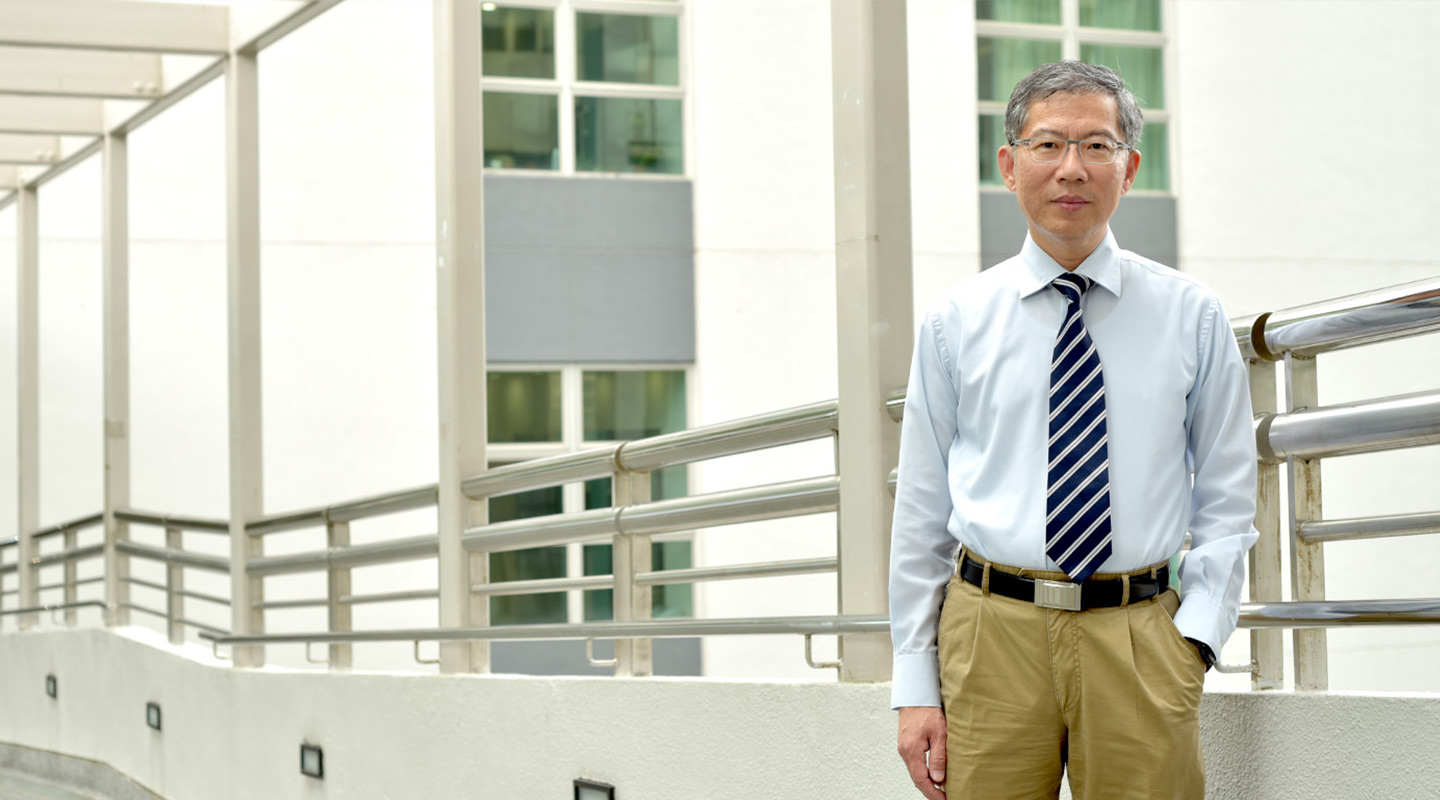Dear readers, With the launch of e-newsletter CUHK in Focus, CUHKUPDates has retired and this site will no longer be updated. To stay abreast of the University’s latest news, please go to https://focus.cuhk.edu.hk. Thank you.
Special Delivery in a Smart City
Raymond Yeung develops a new way of transmitting data

We generally think of data as a commodity, something that needs to be sent through telecommunications hardware and received the other end. Like a letter, in other words, only in digital form.
But data is not in fact a contiguous commodity, a discovery championed by Prof. Raymond Yeung Wai-ho. It can be broken apart, rearranged and transformed instead of being shipped ‘all in one go.’ The information is disseminated through the system, then reassembled, a more-efficient and more-reliable way of making sure it makes it to its ultimate destination.
In the old ‘store-and-forward’ system, the data packet would lose the power of its signal at each transmission point. If the data was 80% efficient in reaching its next ‘hop,’ the following transmission would transmit 80% of 80% of the information, leading to an exponentially bad signal.
By re-coding the information at each hop nexus, the system will maintain an efficiency of 80%, no matter how many hops are involved.
Such a system is called BATS, or BATched Sparse code. Professor Yeung had an inkling that data might behave this way as far back as 1995, although it was an ‘observation’ at the time. Only later did he develop it into a fully evolved theory, then put it into practice.
Professor Yeung knew that two totally different messages sometimes needed to be coded together inside the network, to achieve bandwidth optimality. This clearly showed data was not a commodity, he felt, which makes sense: unlike, say, an ounce of gold, data can easily be copied and coded.
He co-authored a paper outlining the ‘max-flow min-cut theorem’ for network communication in 2000. It proved seminal, ushering in a field of research newly dubbed network coding. He developed BATS in 2011, a network-coding scheme that’s practical and efficient to implement, and has subsequently been refining it and developing it for commercial applications. To use the mail analogy, he explored the ability of the nodes transmitting data not simply to forward packets along, but to open them and rearrange the contents into other packets, which could be recombined at the final destination.

Hong Kong could benefit from his discovery with the development of ‘smart lampposts.’ These lampposts will, if all goes well, contain a multitude of sensors that could better coordinate the traffic light in the vicinity, detect environmental factors such as pollution, and gather analytics to allow for better city planning.
By becoming their own small signal-broadcast posts, lampposts could also allow for territory-wide WiFi coverage, as well as allowing autonomous cars to communicate with the system and with other cars.
The system could be a fast and efficient way of introducing 5G telecommunications to the city. The 5G technology is one order better in terms of bandwidth and latency than the existing 4G systems. But it operates at a very high frequency, meaning it is easily blocked by objects and barriers in its directional transmission. Having broadcast points throughout the city would allow for universal transmission.
To be truly ‘smart,’ the lampposts need to communicate collectively, as part of a network, rather than standing alone. There’s nothing particularly ‘smart’ about lampposts in the first place – they just happen to be government-owned ‘real estate’ spread throughout the city.
It is difficult to lay fiber-optic cable in Hong Kong due to the city’s density and the difficulty in securing enough downtime on roads and sidewalks. Professor Yeung’s BATS technology could allow for a small number of the lampposts to connect to the network by fiber, as nodes, while the others communicate to each other using BATS technology. By cutting data loss to negligible levels with BATS, large ‘multi-hop’ leaps are possible between posts communicating to each other, reducing the need for wired lampposts feeding into the network substantially.

The government is planning a pilot project with 400 lampposts around the city. They will track weather, environmental data, transportation information and crowd flows. The idea is to equip them with WiFi and 5G capability, to improve communications service across the territory. They could also act as digital street signs, providing pedestrian and traffic directions, and indicate local parking conditions.
Professor Yeung, who holds a post in the Department of Information Engineering, has been operating out of the Institute of Network Coding, where he is co-director. The institute is now looking to transfer BATS technology out of the laboratory and into everyday life.
By Alex Frew McMillan
This article was originally published on CUHK Homepage in Oct 2018.